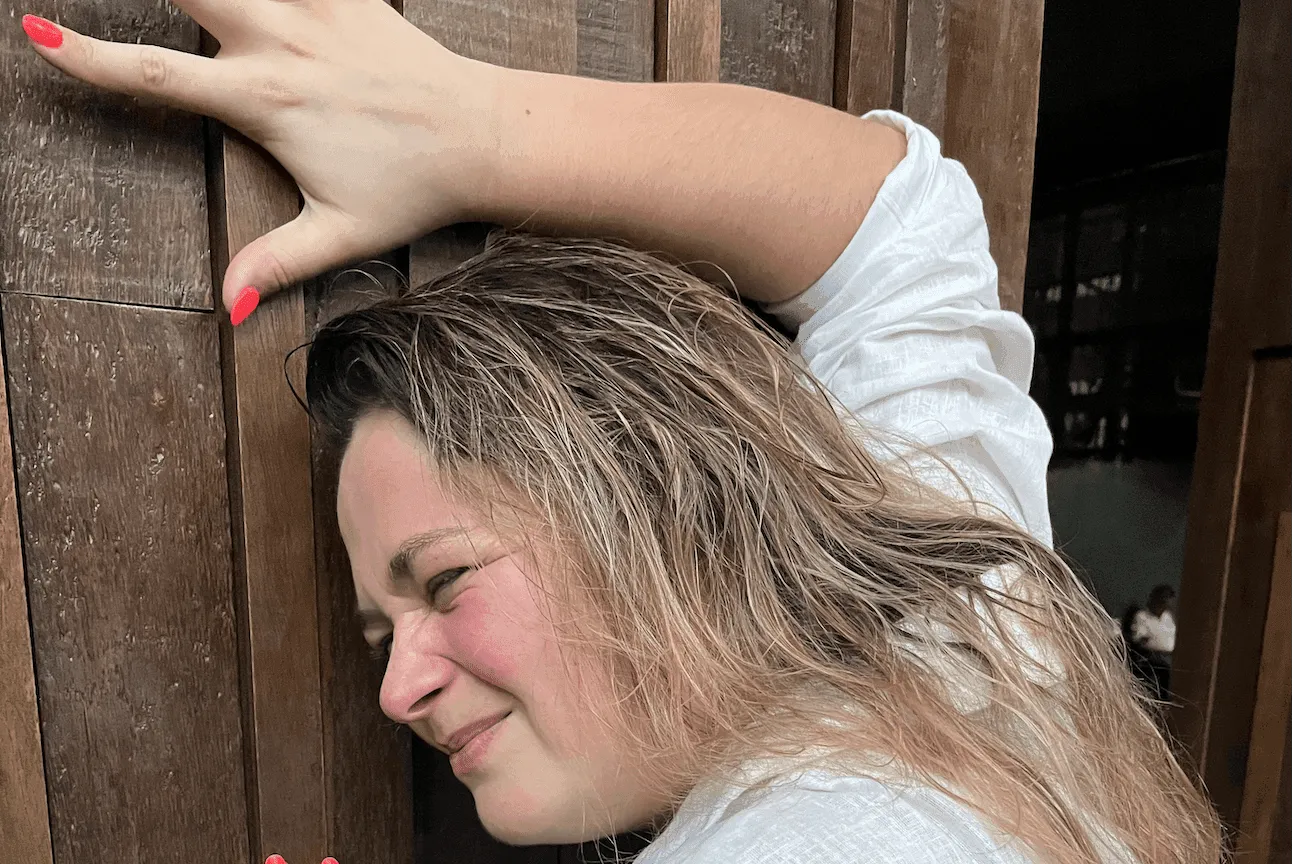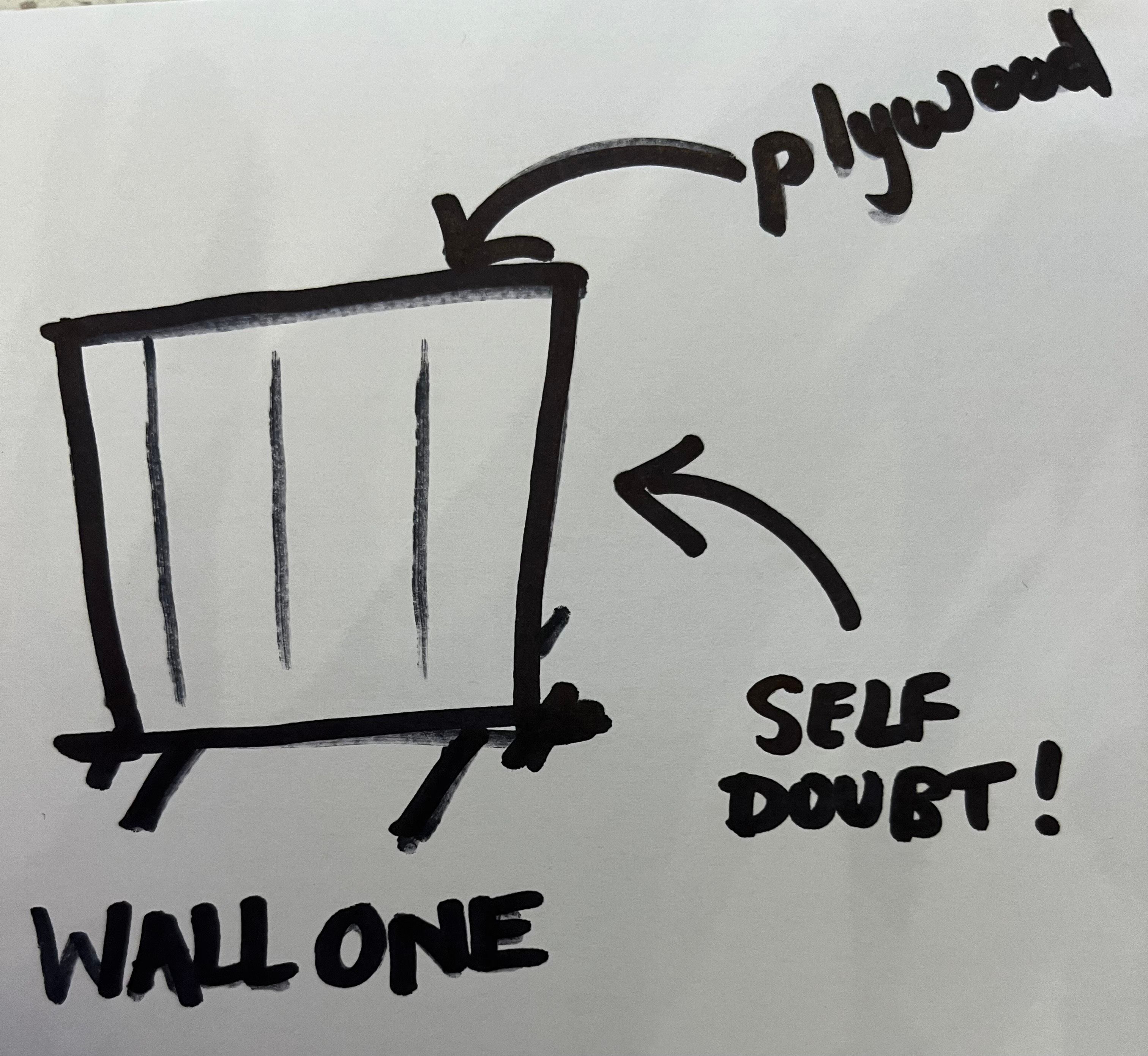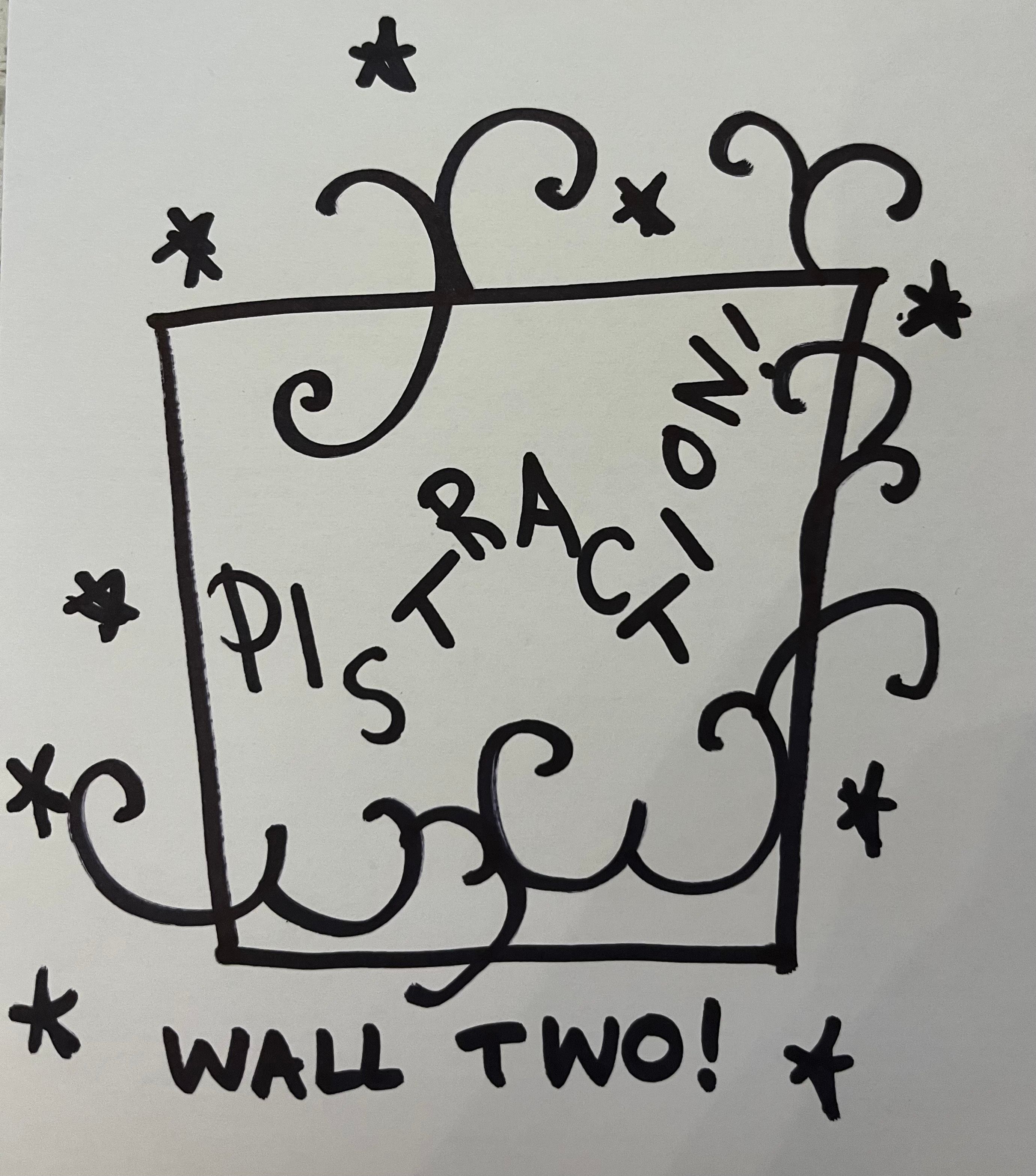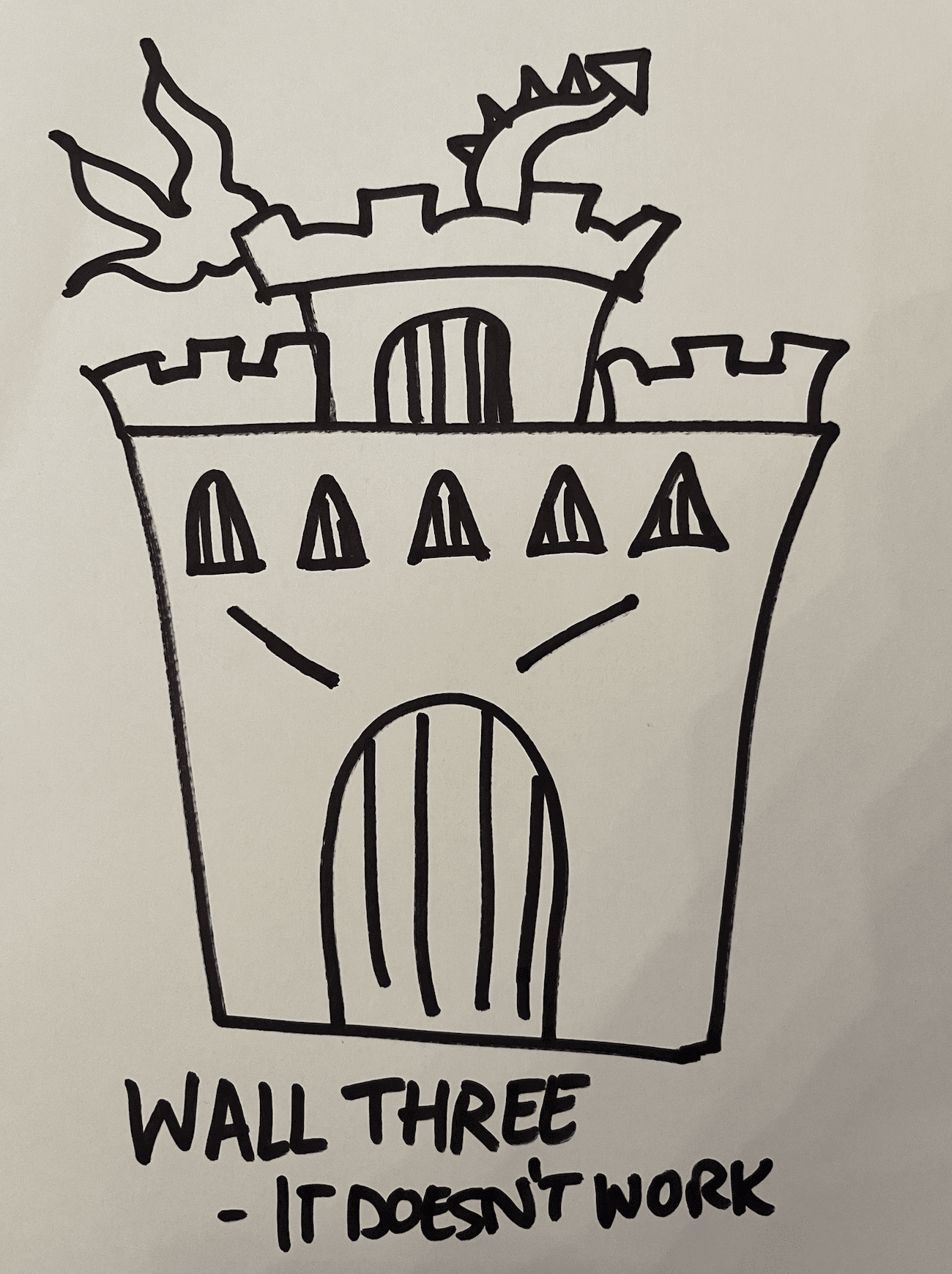Break It Down: Why We Always Hit The Creative Wall
They come in different shapes and sizes - but Verity Johnson's helping you find the sledgehammer you need to move past the walls that hold you back halfway through a creative project.

We all know the various stages of our creative process.
The first part is the best - a blast of sugary enthusiasm that feels like you’ve just snorted a bag of Raro crystals up your nose.
Then you get stuck into the blacksmithing phase, banging away with your hammer at a molten hot lump of an idea in your iron tongs.
Then just as you can see your golden molten blob of an idea taking shape…WHAM! You slam into The Wall. The same wall you always hit at this point.
You drop your idea, it rolls away under a bench somewhere, and suddenly you can’t go on.
I’ve run into this wall repeatedly over the years. It always pops up two-thirds of the way through, just when you thought you had an idea nailed. And after years of slamming into it and breaking my creative nose, I realised there’s a pattern here.
See - in my experience, this isn’t just one wall. There’s three.

The most common type of wall is a film set wall. It looks solid but it isn't. It’s made of painted plywood and polystyrene. And all you need to do is take a deep breath and smash through it.
This first wall is largely built from self-doubt and overthinking. And you know this because when you hit it, you start saying things like, 'What if my script isn’t very funny?', 'What if no one comes to my show?', 'What if this fresh and zany idea is actually the cheap, kitsch cultural equivalent of a Kmart throw pillow?!'...even worse, 'What if I’m the throw pillow?!'
Just. Keep. Going.
When you’re in the final stretch of an idea, all you need to do is finish. Then you can look back and ask yourself whether it’s good enough.
Julia Cameron, the master of creative unblocking, recommends going under the wall. AKA agree with yourself that you’ll finish the job by doing it badly. You’ll keep working, but it doesn’t matter how good it is.
By making this deal, you relieve the paralysis of perfectionist pressure and it means you’ll actually finish. Only then will you realise it was fine all along, or that you can see the full shape of the idea and where it needs to change.

Now, the second type of wall is trickier.
This is the wall you run into when you’ve been distracted by something pretty - and it’s ended up hijacking and ruining the project.
As a writer, I’m always falling in love with a shiny anecdote. I get so passionate about putting it on paper that I start writing without thinking whether I have a bigger point to make. So I end up retrospectively concocting some weak-ass theory to attempt to justify telling you the story.
The aforementioned wall will just look at me and say, 'I love this anecdote about the pig and pukeko and the parsnip, but aside from that….what are you actually trying to say?'
Inevitably, I’m saying nothing. I just did what so many creatives do; falling in love with a shiny thing and twisting the entire work around it until it’s a messy, confusing blob.
The only way forward is to get rid of the shiny thing.
I know. I know. It’s so pretty! But it’s ruining your piece.
If you throw it out and your piece still stands without it, great! You’ll climb the wall. And if your piece falls over without it? Meh. That’s fine too. You’re not losing anything. You never had anything to begin with except a mildly amusing story about a parsnip.

But the final wall is a big, black one that looms over you like the wall of a castle.
And this castle has a moat, a cauldron of lava and a bad-tempered dragon suffering from nicotine withdrawal and IBS on top. There’s no way over it. This is the one you hit when your piece just doesn’t work.
How do you know you’ve hit it?
Well, normally because you’ve tried both the pushing-through-by-doing-it-badly approach and you’ve tried taking out your sparkly bits, and it still won’t work. And often there are two things going on.
One, you don’t actually know what you’re trying to say. Or, even worse, you’re trying to express multiple, conflicting things at the same time and they’re all talking over each other. As such, you can’t hear what it is the piece is trying to say. To you, it sounds like you’re stuck in a birdcage with a bunch of raucous parakeets at an office Christmas party after three espresso martinis.

And there’s no secret for this except walking away - only in the short term though. It helps to put the idea on ice, come back in six months, and see if you can hear it more clearly then.
The second thing going on - you’re not being honest in your work. And there really is no way around this.
If you’re lying to the audience, or yourself, the idea won’t work. And you won’t be able to move any further with it until you realise what you’re lying about (or not admitting.) Unfortunately, art acts as an uncompromising mirror to the truth.
You can’t fake it. So either tell the truth or ditch it.
Now the more you hit these walls - the better you’ll get at telling them apart. And the more competent you’ll get at abseiling over them or tunnelling beneath them.
The important thing to remember is that The Wall is a normal part of the creative process. Part of being an artist is learning how to be a rock climber as well.